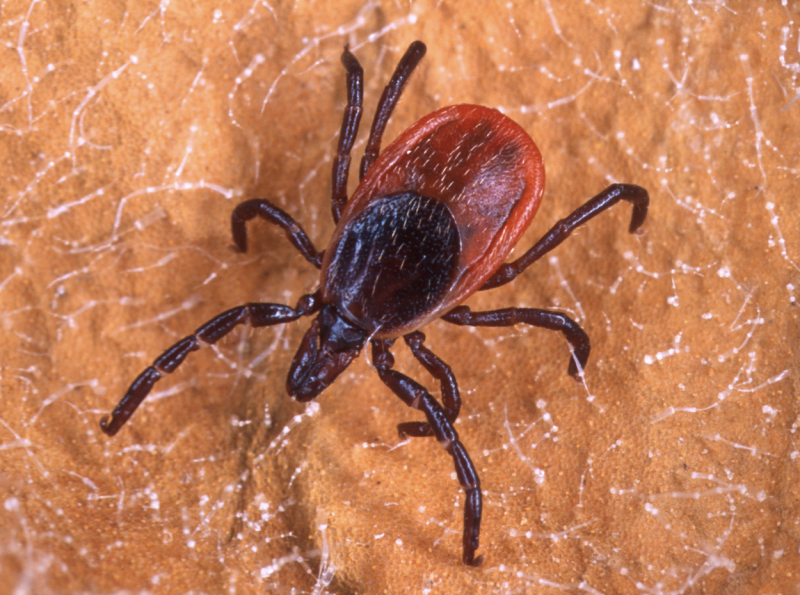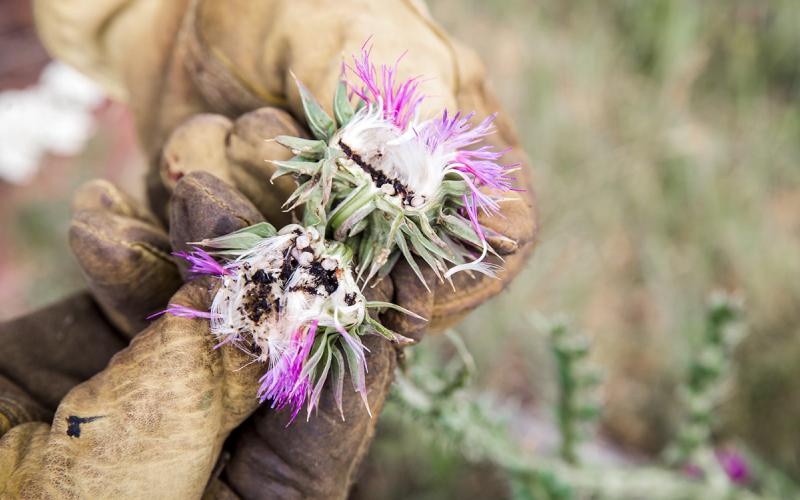
During wet springs, tick populations tend to thrive in South Dakota. These parasitic arthropods require blood to fulfill their nutritional needs and commonly use humans as a host (Figure 1). Some ticks can also carry bacterial diseases that are a threat to human health. The best way to avoid ticks is to be watchful when spending time outdoors and carefully examine yourself for infestations after returning indoors. Furthermore, you can help ward off ticks by wearing protective clothing, clothing treated with tick protectant sprays and applying insect repellent before you go out.
Preventing Tick Bites
As mentioned previously, it is important to be aware of ticks when spending time outdoors. Ticks can show up just about anywhere, but are usually most abundant in tall grass, forested areas, and near water sources (i.e., lakes, streams, etc.). To help protect yourself, it’s a good idea to wear a long-sleeved shirt, long pants, and shoes with long socks. Furthermore, insect repellents containing permethrin may be sprayed onto clothes and shoes to repel ticks through multiple outings. After being outdoors, you should check yourself for ticks that may have gotten onto your body. Good places to check include the scalp, ears, underarms, back, waist, belly button, pelvic area, and legs. If a crawling tick is observed, immediately remove and dispose of it. It is also important to remember that as juveniles, ticks can be very small and aren’t necessarily easy to spot.
Removing an Embedded Tick
If a tick is left on the body for an extended period of time, it will eventually embed itself into the skin and begin feeding. Embedded ticks should be removed promptly but carefully to avoid squeezing them. Squeezing can expel the contents of the tick into the wound, which greatly increases the chances of contracting a tick-borne disease.
To safely remove an embedded tick: First, grasp the tick with pointy tweezers as close to the skin as possible. Next, pull the tick straight out with slow, steady force. Once the tick is removed, disinfect the bite area with rubbing alcohol or soap and water. Finally, dispose of the tick by flushing it down the toilet. If you would like to have the tick identified, bring it to your healthcare provider in rubbing alcohol or in a sealed container.


